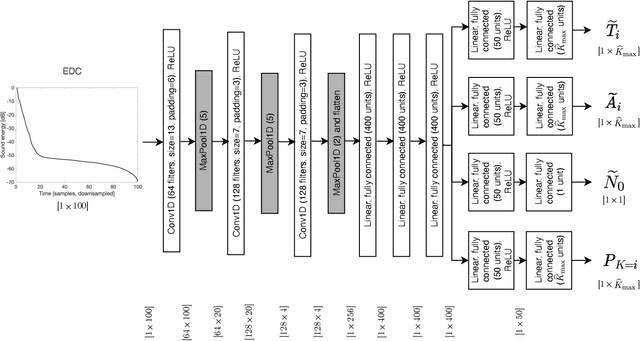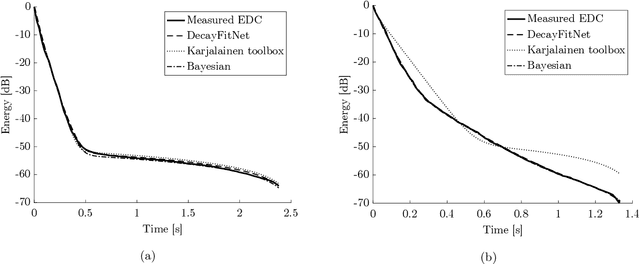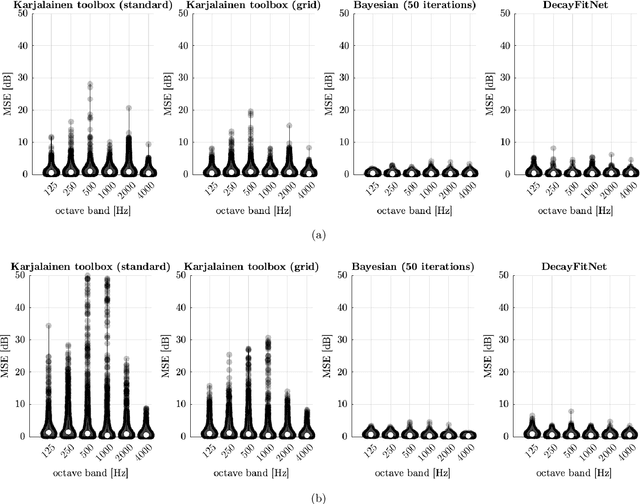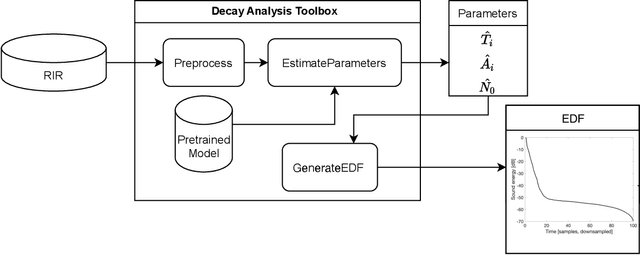Ville Pulkki
Perceptually-motivated Spatial Audio Codec for Higher-Order Ambisonics Compression
Jan 24, 2024Abstract:Scene-based spatial audio formats, such as Ambisonics, are playback system agnostic and may therefore be favoured for delivering immersive audio experiences to a wide range of (potentially unknown) devices. The number of channels required to deliver high spatial resolution Ambisonic audio, however, can be prohibitive for low-bandwidth applications. Therefore, this paper proposes a compression codec, which is based upon the parametric higher-order Directional Audio Coding (HO-DirAC) model. The encoder downmixes the higher-order Ambisonic (HOA) input audio into a reduced number of signals, which are accompanied by perceptually-motivated scene parameters. The downmixed audio is coded using a perceptual audio coder, whereas the parameters are grouped into perceptual bands, quantized, and downsampled. On the decoder side, low Ambisonic orders are fully recovered. Not fully recoverable HOA components are synthesized according to the parameters. The results of a listening test indicate that the proposed parametric spatial audio codec can improve the adopted perceptual audio coder, especially at low to medium-high bitrates, when applied to fifth-order HOA signals.
Neural network for multi-exponential sound energy decay analysis
May 19, 2022



Abstract:An established model for sound energy decay functions (EDFs) is the superposition of multiple exponentials and a noise term. This work proposes a neural-network-based approach for estimating the model parameters from EDFs. The network is trained on synthetic EDFs and evaluated on two large datasets of over 20000 EDF measurements conducted in various acoustic environments. The evaluation shows that the proposed neural network architecture robustly estimates the model parameters from large datasets of measured EDFs, while being lightweight and computationally efficient. An implementation of the proposed neural network is publicly available.
 Add to Chrome
Add to Chrome Add to Firefox
Add to Firefox Add to Edge
Add to Edge